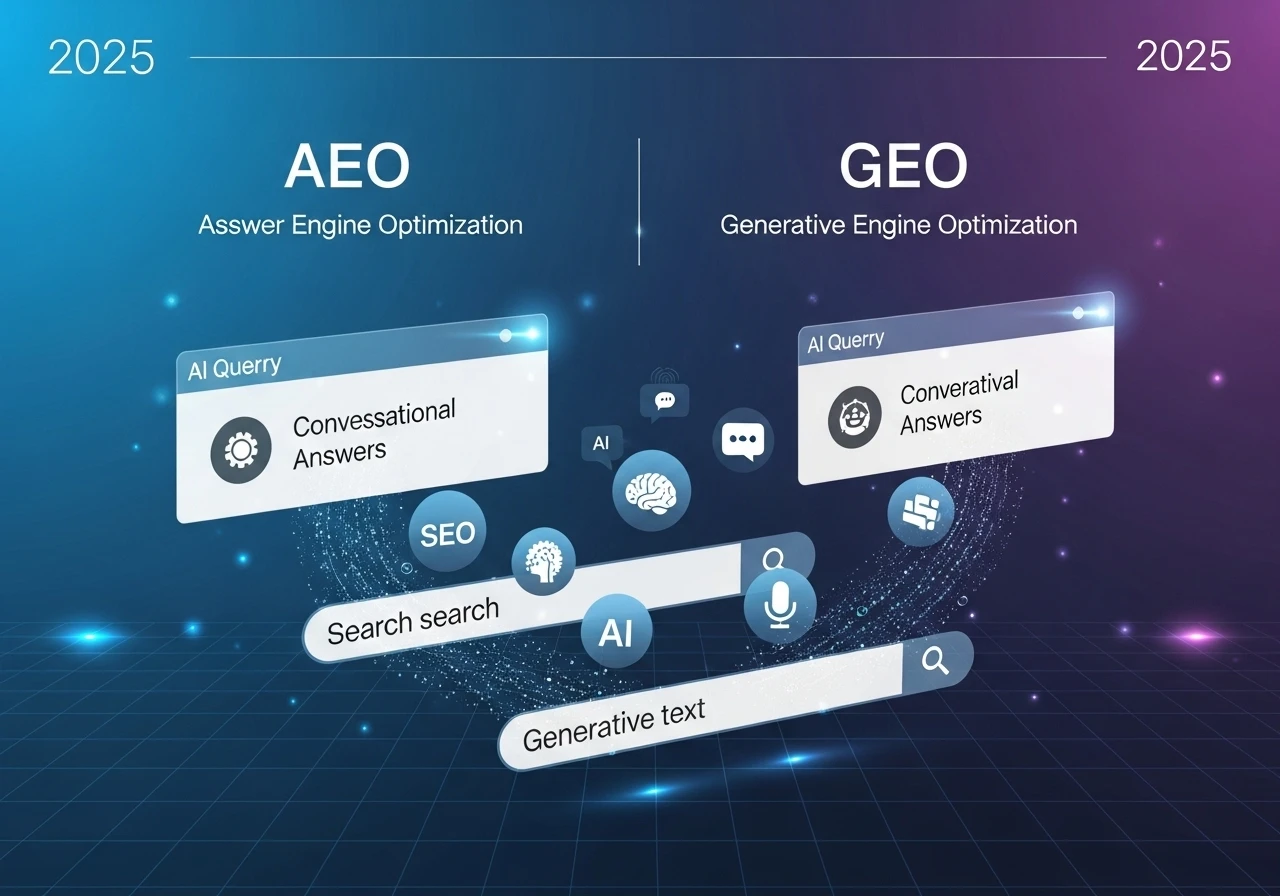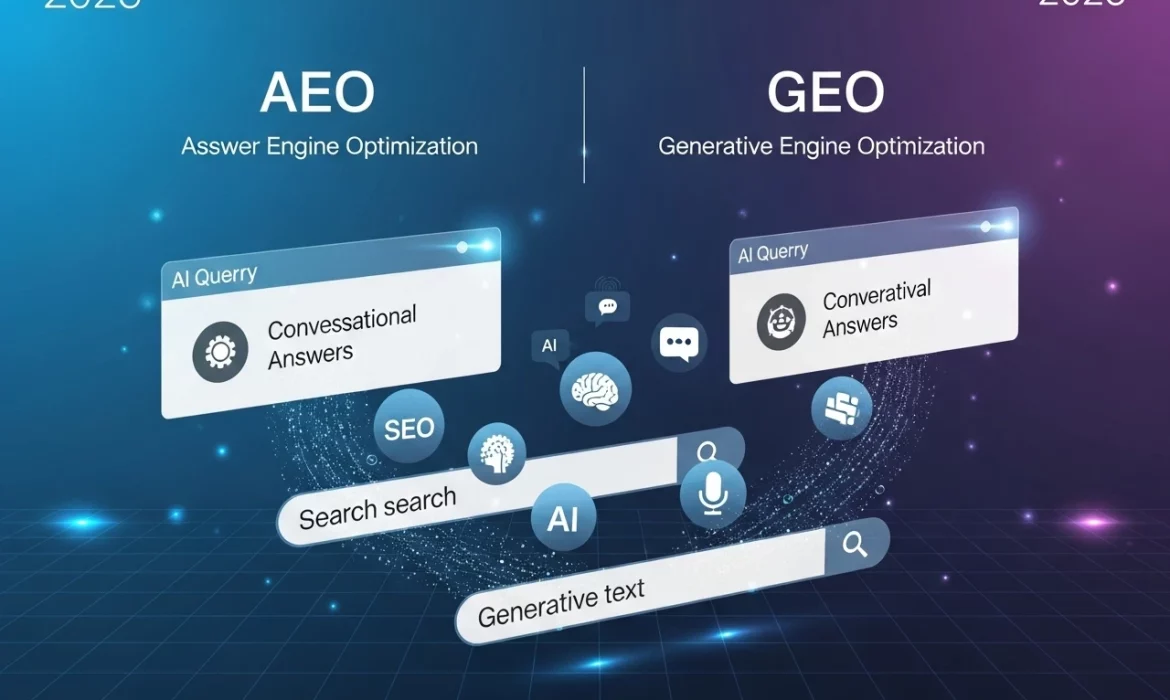Are you still chasing backlinks in a world where AI surfaces answers first? Early studies show 84% of Google queries now feature AI‑powered overviews, reshaping how users discover information.
Traditional SEO tactics alone won’t cut it. Answer Engine Optimization (AEO) and Generative Engine Optimization (GEO) layer on top of SEO to capture voice, featured snippets, and AI model citations.

AEO‑optimized pages deliver 14% higher click‑through rates, while 72% of voice assistant users search by voice daily. Mastering these strategies now ensures that your content remains visible in the AI-driven search era.
AEO Essentials for Direct Answers
Getting picked for answer boxes changes the game. Featured snippets account for 35.1% of the total click share. Voice assistants lean on concise answers. Crafting your content with an AEO focus lifts you above standard listings and into prime view.
Defining Answer Engine Optimization
Answer Engine Optimization means tailoring content so AI engines pull it as the direct answer. You target the question, not just the keyword. That boosts visibility in featured snippets and voice responses.
Structuring Content for Snippets and Voice
Short, clear paragraphs and lists win here. Use headings that mirror user queries, such as “How do I” or “What are the benefits.” Bullet lists and numbered steps are easily parsed, increasing your chances of appearing in voice results.
Schema Mark up Best Practices
Schema tells AI exactly what your content means. Implement FAQ, How To, and QAPage mark up with JSON‑LD to highlight questions and answers. A proper schema boosts your odds of securing that coveted snippet placement.
Question-Based Formats for AI Readability
Write headings as questions your audience actually asks. AI models scan for those patterns to match user intent. With voice search growing, 20.5% of people use it daily, you want your Q&A style to speak AI’s language and the user’s.
GEO Mastery Becoming the Source AI Relies On
Generative Engine Optimization means making your content the trusted resource AI models cite. As of 2024, 67% of top AI chat interfaces draw from authoritative websites.
Start with in‑depth research and original data. AI models favour unique insights and expert commentary over generic rewrites. Well‑sourced content wins the nod when those models generate answers.
Citations and references aren’t optional. Include links to studies, customer data, and industry reports. That builds trust with both users and AI engines tasked with choosing sources.
Finally, signal your AI readiness with prompt‑friendly formatting and an llms.txt file. That tells crawlers you’re optimized for generative use cases and boosts your chance of being surfaced.
Technical Blueprint Schema llms.txt and Metadata
AI needs clear signals to pick your content. Proper schema mark up adoption increased 120% year-over-year as sites prepared for AI search.
Use JSON‑LD for FAQ, How To, and QAPage types. Wrap each question in its own schema block so AI can extract exact answers. That structured data makes your content snippet‑ready.
llms.txt is a new frontier. Similar to robots.txt, it tells large language models which pages they can use for training and citations. Host a simple text file at your root to guide AI crawlers.
Don’t neglect classic metadata. Craft concise titles and descriptions under 60 characters that mirror user queries. AI systems often repurpose metadata when generating overviews.
Platform Playbooks: Google SGE, ChatGPT, and Voice Assistants
Every platform has its own AI flavour. Google’s Search Generative Experience blends web results with AI summaries, while ChatGPT and voice assistants like Alexa rely on direct content pulls.
For Google SGE, feed concise answer blocks at the top of your page and ensure your key points appear within the first 300 words. AI summaries pull from that “above‑the‑fold” content first.
When optimizing for ChatGPT, include clear prompts and “assistant notes” in your content. That helps models surface your brand in conversational answers and boosts your AI citation rate.
For voice search, use natural language and question‑style headings. Voice assistants prefer conversational phrasing and read your text aloud, so using short, clear sentences is always a winning approach.
Measuring Success: AI Snippet Share, AI Citation Rate, and Zero‑Click Traffic
Tracking new AI‑centric KPIs shows you’re winning the AEO/GEO game. Here are the core metrics to monitor:
| Metric | What It Tracks | Why It Matters |
|---|---|---|
| AI Snippet Share | % of queries where your content appears in AI summaries | Measures visibility in generative overviews |
| AI Citation Rate | % of AI answers that credit or link to your site | Reflects authority with language models |
| Zero‑Click Traffic | % of sessions ending without a click-through | Indicates success in fulfilling queries onsite |
Early adopters report a 30% lift in traffic from AI snippets and a 22% drop in bounce rates on pages optimized for GEO. Monitor these metrics alongside traditional SEO KPIs to prove ROI on your AI efforts.
EvenDigit Witnessed a Boost in Featured Snippet Traffic by 45%
A B2B software client struggled to reach page one for their core FAQ topics. Their detailed guides sat buried on page two, unseen by prospects. We overhauled their content with AEO and GEO best practices to turn the tide.
First, we restructured key articles into clear question-and-answer blocks. We implemented the FAQ and HowTo schema using JSON‑LD and added llms.txt to signal AI‑ready content.
We then enriched those answers with unique data points and expert quotes to secure AI model citations.
Within eight weeks, the client’s featured snippet share rose from 12% to 36%. Overall, organic traffic increased by 28%, and bounce rates on those pages decreased by 18%.
This lift showed how targeted AEO and GEO tactics can unlock prime real estate across both classic and AI‑powered search results.
Future Trends: AI Overviews, Multi‑Modal AI, and Hybrid Search
Search is evolving into multi‑modal, hybrid experiences that blend text, images, and voice. By 2026, AI Overviews will replace up to 40% of traditional SERPs, serving instant summaries drawn from web pages.
Multi‑modal AI means your images and videos need optimization alongside text. Platforms like Google Lens and SGE will pull visual content into answers. Tag your media with clear alt text, structured data, and context cues to ensure AI can interpret and surface it accurately.
Hybrid search interfaces will combine chatbots, voice assistants, and classic search in a single experience.
Brands must prepare for queries that start as conversations, shift to visual search, and end in transactional prompts. Staying visible means mastering AEO, GEO, and the new AI Overview formats on every channel.
Partner with EvenDigit for AI‑Driven Visibility
AI search is rewriting the rules. Featured snippets, AI summaries, and generative citations reward sites that speak the language of AEO and GEO. You’ve seen the stats and tactics, now it’s time to act.
Our team has guided hundreds of brands through AI optimization, from capturing voice queries to winning prime placement in AI Overviews. We’ll audit your content, upgrade your content, implement schema and llms.txt, and craft deep insights that AI models rely on.
Ready to claim your spot in tomorrow’s SERPs? Collaborate with EvenDigit to transform these strategies into sustained growth and increased visibility.
EvenDigit
EvenDigit is an award-winning Digital Marketing agency, a brand owned by Softude (formerly Systematix Infotech) – A CMMI Level 5 Company. Softude creates leading-edge digital transformation solutions to help domain-leading businesses and innovative startups deliver to excel.
We are a team of 70+ enthusiastic millennials who are experienced, result-driven, and hard-wired digital marketers, and that collectively makes us EvenDigit. Read More




